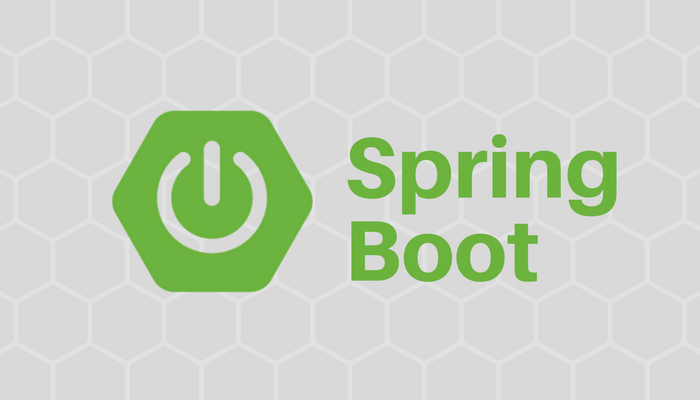Master Spring Boot Project Initialization the Right Way!
Table of Contents
- What is Spring Boot?
- What is Spring Initializr?
- Why Use Spring Initializr for Project Setup?
- Step-by-Step: Setting Up Your First Spring Boot Project
- Best Practices for Spring Boot Project Setup
- Common Mistakes to Avoid
- FAQs
- Conclusion
1. What is Spring Boot?
Spring Boot is an open-source framework from Pivotal (VMware) that simplifies Java enterprise application development. It’s built on top of the core Spring Framework, designed to reduce boilerplate code and configuration.
Key Features:
- Auto-configuration
- Embedded servers (Tomcat, Jetty)
- Production-ready with Actuator
- Seamless integration with Spring ecosystem (Spring Data, Security, Web, etc.)
Spring Boot = Spring + Auto Configuration + Production Readiness
2. What is Spring Initializr?
Spring Initializr is a web-based project generator for Spring Boot applications. It allows you to select the build tool, dependencies, project metadata, and Java version to bootstrap your project in just a few clicks.
You can use it via:
- Web UI (start.spring.io)
- IDE integration (IntelliJ, Eclipse, VS Code)
- Spring Boot CLI
3. Why Use Spring Initializr for Project Setup?
Benefits:
- Saves time by generating boilerplate structure
- Ensures correct version compatibility between Spring Boot and dependencies
- Supports Maven or Gradle
- Clean, consistent project setup for teams
- Reduces chances of manual errors in configuration
4. Step-by-Step: Setting Up Your First Spring Boot Project
Let’s walk through the real-world process of creating a Spring Boot project using Spring Initializr (with diagrams and code samples).
Step 1: Go to Spring Initializr
Navigate to 👉 https://start.spring.io
Options to configure:
| Option | Description | Example |
|---|---|---|
| Project | Maven or Gradle | Maven |
| Language | Java | Java |
| Spring Boot | Version of Spring Boot | 3.2.2 or latest stable |
| Group | Package group (domain style) | com.zerotojavapro |
| Artifact | Project name | spring-boot-demo |
| Name | Main class name | SpringBootDemo |
| Packaging | JAR or WAR | JAR |
| Java | Java version | Java 21 |
| Dependencies | Select features | Spring Web, Spring Boot DevTools |
Step 2: Add Dependencies
Search and add:
- Spring Web (for REST APIs)
- Spring Boot DevTools (for hot reload)
- Spring Data JPA (optional, for DB integration)
- Lombok (optional, for boilerplate-free POJOs)
- H2 Database (for quick testing)
Step 3: Click “Generate”
You’ll get a .zip file. Extract it and open it using your IDE (IntelliJ IDEA, Eclipse, etc.).
Step 4: Explore the Project Structure
spring-boot-demo/
├── src/
│ ├── main/
│ │ ├── java/
│ │ │ └── com/zerotojavapro/demo/
│ │ │ └── SpringBootDemoApplication.java
│ │ └── resources/
│ │ ├── application.properties
│ │ └── static/
│ └── test/
│ └── java/...
├── pom.xml
Step 5: Run the Project
Open a terminal and run:
./mvnw spring-boot:run
Or run the SpringBootDemoApplication.java directly from your IDE.
Step 6: Create a REST Controller
@RestController
public class HelloController {
@GetMapping("/")
public String hello() {
return "Hello from Spring Boot!";
}
}
Visit: http://localhost:8080
Output: "Hello from Spring Boot!"
5. Best Practices for Spring Boot Project Setup
| Practice | Description |
|---|---|
| ✔️ Use latest LTS Java version | Java 21 is great for modern features and performance |
| ✔️ Organize packages properly | controller, service, repository, config |
| ✔️ Use application.yml | For better structured configuration |
| ✔️ Externalize configuration | Don’t hardcode credentials or URLs |
| ✔️ Enable Actuator | To monitor application metrics |
✔️ Use profiles (dev, prod) | Profile-based configurations with @Profile or YAML files |
6. Common Mistakes to Avoid
- Using incompatible Java and Spring Boot versions
- Ignoring proper package structure
- Forgetting to add necessary dependencies (e.g., Web for REST)
- Using default passwords or storing secrets in
application.properties - Running outdated Maven dependencies without checking compatibility
7. FAQs
❓ Do I have to use Spring Initializr?
No, but it saves time and avoids configuration errors. Manual setup is only ideal for advanced custom builds.
❓ Can I use Gradle instead of Maven?
Yes. Choose Gradle during Spring Initializr setup. It’s a personal or team preference.
❓ How do I update dependencies?
Modify the pom.xml (or build.gradle) and use:
./mvnw dependency:tree
or check https://mvnrepository.com
❓ Can I use Java 21?
Yes! Spring Boot 3.2+ supports Java 21 natively. It’s a great choice for modern features like virtual threads.
8. Conclusion
Setting up a Spring Boot project using Spring Initializr is the fastest and cleanest way to kickstart Java development. With just a few clicks, you get a pre-configured, production-ready project that follows industry best practices.
Whether you’re building a REST API, a microservice, or a full-stack web app, Spring Initializr helps you focus more on business logic and less on boilerplate.
